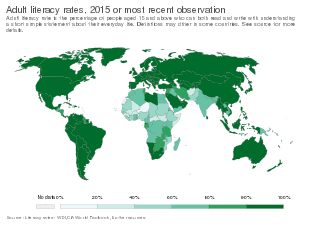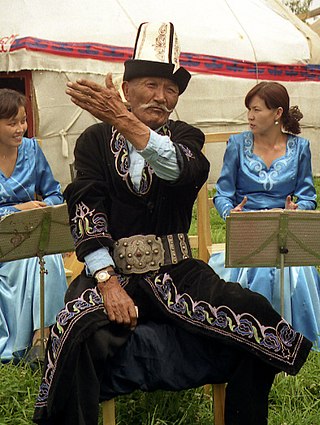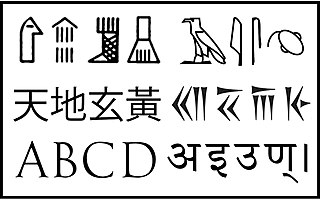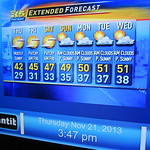Related Research Articles

Literacy is the ability to read and write. Some researchers suggest that the study of "literacy" as a concept can be divided into two periods: the period before 1950, when literacy was understood solely as alphabetical literacy ; and the period after 1950, when literacy slowly began to be considered as a wider concept and process, including the social and cultural aspects of reading and writing and functional literacy.

Oral tradition, or oral lore, is a form of human communication in which knowledge, art, ideas and culture are received, preserved, and transmitted orally from one generation to another. The transmission is through speech or song and may include folktales, ballads, chants, prose or poetry. It is a medium of communication for a society to transmit oral history, oral literature, oral law and other knowledge across generations without a writing system, or in parallel to a writing system.
Cultural literacy is a term coined by American educator and literary critic E. D. Hirsch, referring to the ability to understand and participate fluently in a given culture. Cultural literacy is an analogy to literacy proper. A literate reader knows the object-language's alphabet, grammar, and a sufficient set of vocabulary; a culturally literate person knows a given culture's signs and symbols, including its language, particular dialectic, stories, entertainment, idioms, idiosyncrasies, and so on. The culturally literate person is able to talk to and understand others of that culture with fluency.

A written language is the representation of a language by means of writing. This involves the use of visual symbols, known as graphemes, to represent linguistic units such as phonemes, syllables, morphemes, or words. However, written language is not merely spoken or signed language written down, though it can approximate that. Instead, it is a separate system with its own norms, structures, and stylistic conventions, and it often evolves differently than its corresponding spoken or signed language.
Word of mouth is the passing of information from person to person using oral communication, which could be as simple as telling someone the time of day. Storytelling is a common form of word-of-mouth communication where one person tells others a story about a real event or something made up. Oral tradition is cultural material and traditions transmitted by word of mouth through successive generations. Storytelling and oral tradition are forms of word of mouth that play important roles in folklore and mythology. Another example of oral communication is oral history—the recording, preservation and interpretation of historical information, based on the personal experiences and opinions of the speaker. Oral history preservation is the field that deals with the care and upkeep of oral history materials collected by word of mouth, whatever format they may be in.
Media ecology theory is the study of media, technology, and communication and how they affect human environments. The theoretical concepts were proposed by Marshall McLuhan in 1964, while the term media ecology was first formally introduced by Neil Postman in 1968.

Oral literature, orature, or folk literature is a genre of literature that is spoken or sung in contrast to that which is written, though much oral literature has been transcribed. There is no standard definition, as anthropologists have used varying descriptions for oral literature or folk literature. A broad conceptualization refers to it as literature characterized by oral transmission and the absence of any fixed form. It includes the stories, legends, and history passed through generations in a spoken form.

Walter Jackson Ong was an American Jesuit priest, professor of English literature, cultural and religious historian, and philosopher. His major interest was in exploring how the transition from orality to literacy influenced culture and changed human consciousness. In 1978 he served as elected president of the Modern Language Association.
Computers and writing is a sub-field of college English studies about how computers and digital technologies affect literacy and the writing process. The range of inquiry in this field is broad including discussions on ethics when using computers in writing programs, how discourse can be produced through technologies, software development, and computer-aided literacy instruction. Some topics include hypertext theory, visual rhetoric, multimedia authoring, distance learning, digital rhetoric, usability studies, the patterns of online communities, how various media change reading and writing practices, textual conventions, and genres. Other topics examine social or critical issues in computer technology and literacy, such as the issues of the "digital divide", equitable access to computer-writing resources, and critical technological literacies. Many studies by scientists have shown that writing on computer is better than writing in a book
A post-literate society is a hypothetical society in which multimedia technology has advanced to the point where literacy, the ability to read or write, is no longer necessary or common. The term appears as early as 1962 in Marshall McLuhan's The Gutenberg Galaxy. Many science-fiction societies are post-literate, as in Ray Bradbury's Fahrenheit 451, Dan Simmons' novel Ilium, and Gary Shteyngart's Super Sad True Love Story.
Print culture embodies all forms of printed text and other printed forms of visual communication. One prominent scholar of print culture in Europe is Elizabeth Eisenstein, who contrasted the print culture of Europe in the centuries after the advent of the Western printing-press to European scribal culture. The invention of woodblock printing in China almost a thousand years prior and then the consequent Chinese invention of moveable type in 1040 had very different consequences for the formation of print culture in Asia. The development of printing, like the development of writing itself, had profound effects on human societies and knowledge. "Print culture" refers to the cultural products of the printing transformation.

The history of writing traces the development of writing systems and how their use transformed and was transformed by different societies. The use of writing prefigures various social and psychological consequences associated with literacy and literary culture.

Eric Alfred Havelock was a British classicist who spent most of his life in Canada and the United States. He was a professor at the University of Toronto and was active in the Canadian socialist movement during the 1930s. In the 1960s and 1970s, he served as chair of the classics departments at both Harvard and Yale. Although he was trained in the turn-of-the-20th-century Oxbridge tradition of classical studies, which saw Greek intellectual history as an unbroken chain of related ideas, Havelock broke radically with his own teachers and proposed an entirely new model for understanding the classical world, based on a sharp division between literature of the 6th and 5th centuries BC on the one hand, and that of the 4th on the other.

Composition studies is the professional field of writing, research, and instruction, focusing especially on writing at the college level in the United States.
Phonocentrism is the belief that sounds and speech are inherently superior to, or more primary than, written language or sign language. Those who espouse phonocentric views maintain that spoken language is the primary and most fundamental method of communication whereas writing is merely a derived method of capturing speech. Many also believe that spoken language is inherently richer and more intuitive than written language.
Electracy is a theory by Gregory Ulmer that describes the skills necessary to exploit the full communicative potential of a new electronic media such as multimedia, hypermedia, social software, and virtual worlds. According to Ulmer, electracy "is to digital media what literacy is to print". It encompasses the broader cultural, institutional, pedagogical, and ideological implications inherent in the major societal transition from print to electronic media. Electracy is a portmanteau of "electricity" and Jacques Derrida's term "trace".

Orality is thought and verbal expression in societies where the technologies of literacy are unfamiliar to most of the population. The study of orality is closely allied to the study of oral tradition.

Literature is any collection of written work, but it is also used more narrowly for writings specifically considered to be an art form, especially novels, plays, and poems. It includes both print and digital writing. In recent centuries, the definition has expanded to include oral literature, much of which has been transcribed. Literature is a method of recording, preserving, and transmitting knowledge and entertainment. It can also have a social, psychological, spiritual, or political role.

Charles Bazerman is an American educator and scholar. He was born and raised in New York. He has contributed significantly to the establishment of writing as a research field, as evidenced by the collection of essays written by international scholars in Writing as A Human Activity: Implications and Applications of the Work of Charles Bazerman. Best known for his work on genre studies and the rhetoric of science, he is a Professor of Education at the University of California, Santa Barbara, where he also served as Chair of the Program in Education for eight years. He served as Chair of the Conference on College Composition and Communication, delivering the 2009 CCCC Chair's Address, "The Wonders of Writing," in San Francisco, California.

Multimodality is the application of multiple literacies within one medium. Multiple literacies or "modes" contribute to an audience's understanding of a composition. Everything from the placement of images to the organization of the content to the method of delivery creates meaning. This is the result of a shift from isolated text being relied on as the primary source of communication, to the image being utilized more frequently in the digital age. Multimodality describes communication practices in terms of the textual, aural, linguistic, spatial, and visual resources used to compose messages.
References
Notes
- ↑ Ong 1971, p. 285.
- ↑ Ong 1982, p. 133.
- ↑ Ong 1982, p. 118.
- ↑ Pettitt, Tom (2007). "Before the Gutenberg Parenthesis: Elizabethan-American Compatibilties".
- ↑ Bounegru, Liliana (13 October 2008). "Secondary Orality in Microblogging". Masters of Media.
Bibliography
- Ong, Walter J. (1971). "The Literate Orality of Popular Culture". Ong, Rhetoric, Romance, and Technology: Studies in the Interaction of Expression and Culture . Ithaca: Cornell University Press. ISBN 9780801406454.
- Ong, Walter J. (1982). Orality and Literacy: The Technologizing of the Word. London: Methuen.